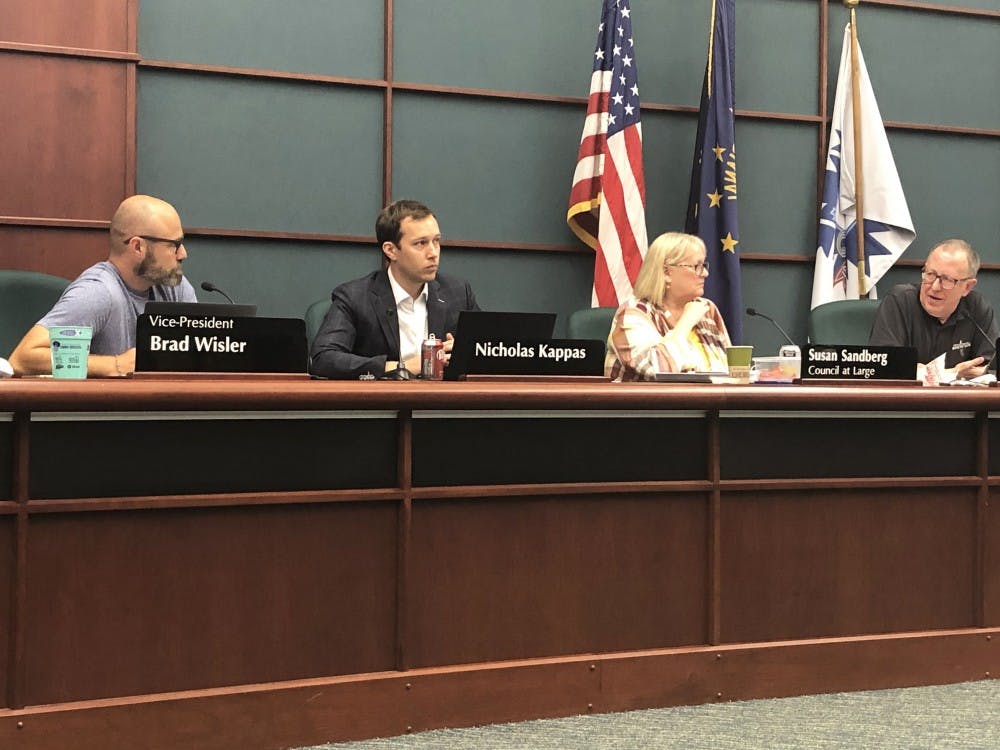Bloomington’s new Unified Development Ordinance, which will determine the future of Bloomington development and housing until it is updated next, is now down to its last two steps before being passed into law. The more than 400-page document has already been through over a year-and-a-half process of crafting and discussion.
But the length of the last two steps, passing it through the Bloomington Plan Commission and the Bloomington City Council, will be determined by residents and their eagerness to participate in amending the document. Participation has been high, especially on the issue of whether duplexes and triplexes should be allowed in the neighborhoods close to downtown.
After a six-hour meeting Sept. 5, the plan commission decided to keep the rules how they were in the new document. If the city council agrees, duplexes and triplexes will be allowed in the zoning districts that make up the downtown neighborhoods on “conditional use.”
If it is passed by city council, homeowners or developers who wish to build ‘plexes’ in core neighborhoods will go through the Bloomington Board of Zoning and Appeals for approval. This is a change from the UDO that has been in place for more than 20 years that doesn’t permit duplexes and triplexes to be built in these neighborhoods at all.
Residents are split over whether to not permit 'plexes' at all or make them even easier to build.
Some, like IU professor Dave Warren, think allowing ‘plexes’ in the core neighborhoods is the way to create compact urban form, which is a more sustainable, equitable and affordable way to live, according to Warren.
“If we don’t allow these ‘missing middle’ structures to be built throughout a growing city, we’re guaranteeing any new housing will be built further out, contributing to longer commutes, degradation of more rural landscapes and higher emissions,” Warren said at the Sept. 5 meeting.
The ‘missing middle,’ mentioned many times in the discussions about duplexes and triplexes, refers to housing for middle-income residents who often don’t want to rent an apartment or own a single-family home.
Others are protective of the core neighborhoods’ historic value and say its neighborhoods are already affordable and compact.
“They are the fabric," resident Jan Sorby said. “They are the body that tell the story of the everyday person. And in many of the neighborhoods like Bryant Park and McDoel, they are the story of the common person. We are the working class neighborhoods that were there for everybody.”
Fears are also circulating in meetings about out-of-town developers being allowed to destroy old homes and build high-priced ‘plexes’ for students. Residents compared developers to vultures, waiting to attack.
“If you vote to allow duplexes and triplexes in the core neighborhoods, you are voting for big business and wealthy developers and you are voting against the people who are there now who in many cases are on fixed income or low income,” resident Michelle Henderson said.
The plan commission has had four special hearings over the past two and a half weeks, two of which were packed with residents. The commission has three more planned for the next two weeks.
Amendments will continue to be voted on during these meetings. Joe Hoffmann, president of the plan commission, reminded the audience during a meeting break that the city council will be able to undo or add any amendments they want once the UDO is handed off to them.
The next plan commission special hearings will be at 5:30 p.m. Sept. 16 in the Council Chambers, Sept. 17 in the Utility Service Center Board Room at 600 E. Miller Drive and Sept. 23 in Council Chambers. Amendments are continuously being posted on the city website where the public may leave comments.




